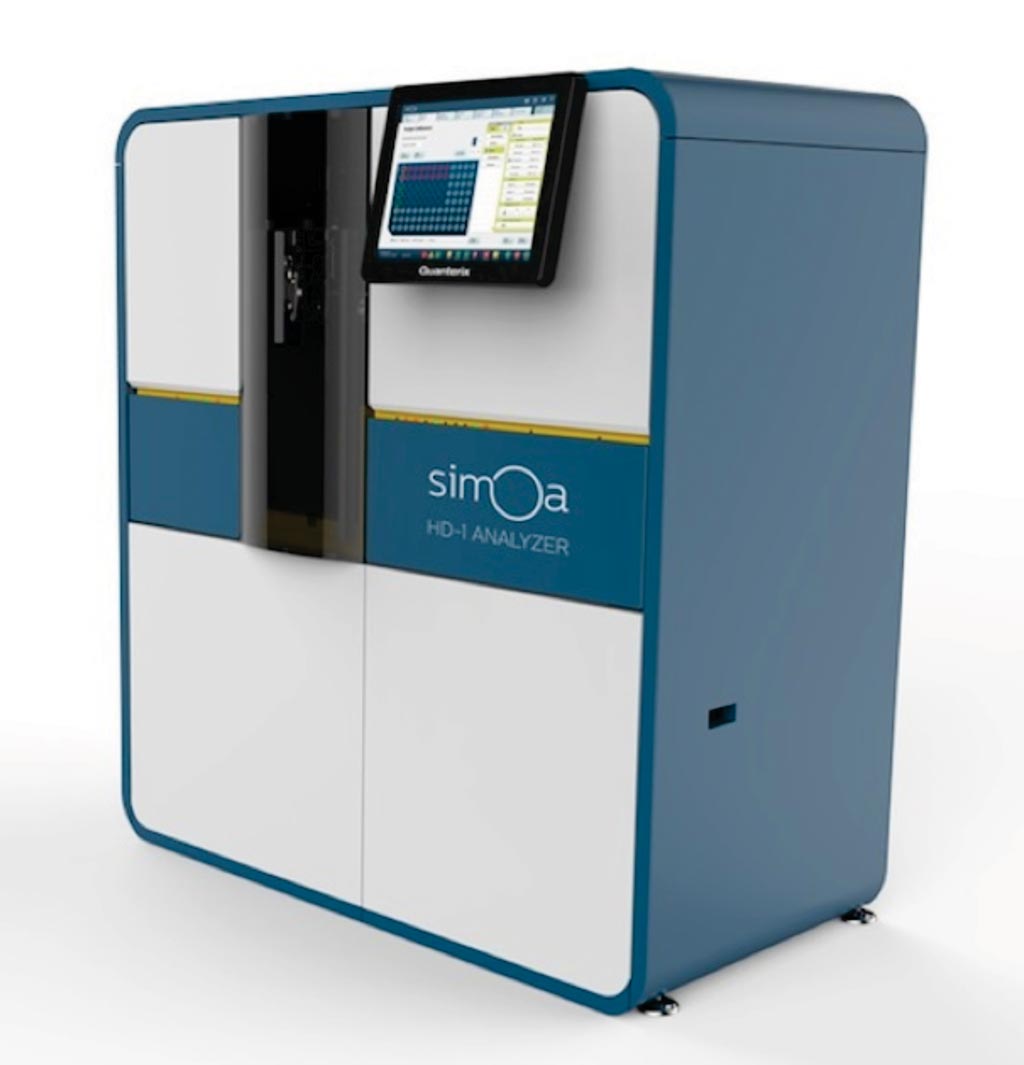Blood Test Differentiates Parkinson's from Similar Diseases
By LabMedica International staff writers
Posted on 22 Feb 2017
In early stages of disease, it can be difficult to differentiate between Parkinson's disease and atypical parkinsonism disorders (APDs) like multiple system atrophy, progressive supranuclear palsy and corticobasal degeneration, because symptoms can overlap.Posted on 22 Feb 2017
A simple blood test may be as accurate as a spinal fluid test when trying to determine whether symptoms are caused by Parkinson's disease or another atypical Parkinsonism disorder as identifying these diseases early is important because expectations concerning progression and potential benefit from treatment differ dramatically between Parkinson's and APDs.

Image: The Simoa HD-1 ultrasensitive immunoassay platform (Photo courtesy of Quanterix).
Scientists at Lund University and their colleagues examined 504 people from three study groups. Two groups, one in England and one in Sweden, had healthy people and people who had been living with Parkinson's or APDs for an average of four to six years. The third group was comprised of people who had been living with the diseases for three years or less. In all, there were 244 people with Parkinson's, 88 with multiple system atrophy, 70 with progressive supranuclear palsy, 23 with corticobasal degeneration and 79 people who served as healthy controls.
The investigators used a sensitive sandwich method, the Nflight enzyme-linked immunosorbent assay (ELISA) kit to measure cerebrospinal fluid (CSF) neurofilament light chain protein (NfL). NfL concentrations in blood were measured using the monoclonal antibodies and calibrator from the NfL assay, transferred onto the Simoa platform using an in-house kit.
The team found the blood test was just as accurate as a spinal fluid test at diagnosing whether someone had Parkinson's or an APD, in both early stages of disease and in those who had been living with the diseases longer. The nerve protein levels were higher in people with APDs and lower in those with Parkinson's disease and those who were healthy. In the Swedish group, the protein levels averaged around 10 pg/mL. People with multiple system atrophy had levels averaging around 20 pg/mL; those with progressive supranuclear palsy averaged around 25 pg/mL; and those with corticobasal degeneration averaged around 27 pg/mL.
Oskar Hansson, MD, PhD, the lead author of the study said, “We have found that concentrations of a nerve protein in the blood can discriminate between these diseases as accurately as concentrations of that same protein in spinal fluid. Lower concentrations of the nerve protein in the blood of those with Parkinson's may be due to less damage to nerve fibers compared to those with atypical Parkinsonism disorders.” The study was published on February 8, 2017, in the journal Neurology.









 assay.jpg)




